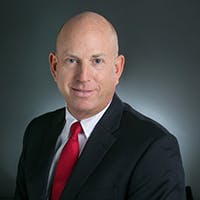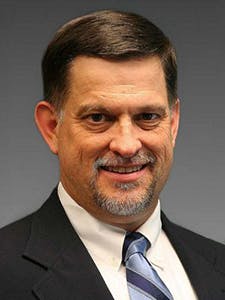Co-presenters Todd Smith, safety director at Slater Painting, and John Brattlof, corporate safety director at White Construction Company, say it’s also important to focus on the bigger picture. Taking a 20,000-foot view can help other members in their organization, especially at the leadership level, comprehend the need for and benefits of workplace safety.
During their session at the 2020 Safety Leadership Conference, which takes place Nov. 10-12 virtually, Smith and Brattlof will discuss common mistakes safety professionals make so they can go beyond threats of OSHA fines and safety violations to build a culture of safety.
Smith and Brattlof preview their session, “Leading Beyond Compliance Based Safety,” in a Q&A with EHS Today.
EHS Today: Can you offer us a short description of your presentation and describe how it relates to safety leadership?
Why is the topic of your presentation of interest to you and why is it important to SLC attendees?
This presentation explores the common misconceptions and mistakes made by safety professionals in their efforts to lead beyond compliance and develop best practices in construction safety. Professional leaders must be aware of the difficulties of interactions and communication.
What are the takeaways you hope to leave with attendees?
Learn clear and simple techniques to address each warning sign and restore the conversation back to [the] free exchange [of] thoughts and ideas without confrontation in order to lead the safety program beyond compliance.
Please share an example of a personal or professional experience you’ve had related to safety leadership or the topic of your presentation.
Here's an anecdote that we'll share in our SLC presentation:
James is a great carpenter. He worked in the maintenance shop for many years with me. One of his common tasks was to build out portable office trailers for new projects. He had been doing this for years and always finished on time with a true craftsman level of quality. James was a great employee. He produced great work and never created any problems. That is, until his supervisor started hounding him about safety.
Adam had been the maintenance supervisor for decades. His department was productive and did not have any injuries for decades. Since the company was always talking about safety at every possible opportunity, Adam thought he should as well.
James was ripping long sheets of plywood on a table saw when Adam walked by. Wanting to promote safety, Adam assessed the situation and saw that James was not wearing any gloves.
‘Get your gloves on James!’ Adam yelled over the noise of the saw.
James finished the cut and found some gloves to wear. Adam thought he had performed his role as a supervisor extremely well and went on his day pleased with himself. This safety stuff isn’t so hard.
Later that day, the ambulance arrived to take James, and his severed thumb tip, to the ER. Gloves do not help a hand from table saw hazards. James had been ripping plywood so long on that saw that he did not even realize how he had been doing it. For decades, James had been guiding the wood with his right hand until his hand hit the guard and he would pull away. The work gloves made sure he did not feel the guard and his thumb went right into the spinning blade. The first day of trying to be safe resulted in his first injury.
Safety professionals have become myopic in their views of what makes an organization successful. Unless you work for the National Safety Council, your employer is not in business to make people safer. Your company exists to provide the marketplace goods or services that the marketplace is willing to pay for. Safety programs are usually implemented to decrease the cost of unwanted accidents or for a moral obligation to reduce pain and suffering of the employees. On occasion, there are organizations that will claim both are valid reasons. Too often, the safety professional forgets the main goal of the company and focuses on just reducing accidents.
In order to be truly successful, the safety professional needs to also be aware that operational excellence creates safety excellence. When operations are running smoothly, there are less variables present. Fewer variables lead to fewer opportunities for unplanned events. Safety programs should not compete with operational efforts.
Adam never attempted to help James do his job better. He never examined how the work was being done and if there were ways to improve the operation. Adam simply knew he was supposed to support safety, so he thought making James wear gloves would show that safety was important. By itself, this was not a bad thing, but without attempting to improve the entire process, Adam just made things worse.”
What do you think are some of the most pressing EHS and risk management issues facing corporate leaders and safety professionals in 2020 and beyond?
Only through mutual respect and relationship-building can safety professionals go beyond threats of OSHA fines and safety violation write ups and build an effective safety culture.



